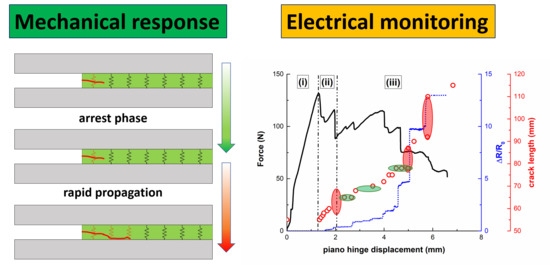Mechanical and Crack-Sensing Capabilities of Mode-I Joints with Carbon-Nanotube-Reinforced Adhesive Films under Hydrothermal Aging Conditions
Abstract
:1. Introduction
2. Experimental
2.1. Materials and Manufacturing
2.2. Electromechanical Tests
2.3. Joint Characterization
3. Results and Discussion
3.1. GIC Values at Initial Conditions
3.2. Influence of Aging Mechanisms
3.3. Crack Propagation Monitoring
4. Conclusions
Author Contributions
Funding
Acknowledgments
Conflicts of Interest
References
- Yu, M.F.; Lourie, O.; Dyer, M.J.; Moloni, K.; Kelly, T.F.; Ruoff, R.S. Strength and breaking mechanism of multiwalled carbon nanotubes under tensile load. Science 2000, 287, 637–640. [Google Scholar] [CrossRef] [Green Version]
- Dai, H. Carbon Nanotubes: Synthesis, Integration, and Properties. Chemin 2003, 34, 1035–1044. [Google Scholar] [CrossRef]
- De Volder, M.F.L.; Tawfick, S.H.; Baughman, R.H.; Hart, A.J. Carbon Nanotubes: Present and Future Commercial Applications. Science 2013, 339, 535–539. [Google Scholar] [CrossRef] [PubMed] [Green Version]
- Hu, N.; Masuda, Z.; Yan, C.; Yamamoto, G.; Fukunaga, H.; Hashida, T. The electrical properties of polymer nanocomposites with carbon nanotube fillers. Nanotechnology 2008, 19, 215701. [Google Scholar] [CrossRef] [PubMed] [Green Version]
- Jakubinek, M.B.; Ashrafi, B.; Zhang, Y.; Martinez-Rubi, Y.; Kingston, C.T.; Johnston, A.; Simard, B. Single-walled carbon nanotube–epoxy composites for structural and conductive aerospace adhesives. Compos. Part B Eng. 2015, 69, 87–93. [Google Scholar] [CrossRef]
- Mostaani, F.; Moghbeli, M.R.; Karimian, H. Electrical conductivity, aging behavior, and electromagnetic interference (EMI) shielding properties of polyaniline/MWCNT nanocomposites. J. Thermoplast. Compos. Mater. 2017, 31, 1393–1415. [Google Scholar] [CrossRef]
- Chen, J.; Han, J.; Xu, D. Thermal and electrical properties of the epoxy nanocomposites reinforced with purified carbon nanotubes. Mater. Lett. 2019, 246, 20–23. [Google Scholar] [CrossRef]
- Han, S.; Meng, Q.; Araby, S.; Liu, T.; Demiral, M. Mechanical and electrical properties of graphene and carbon nanotube reinforced epoxy adhesives: Experimental and numerical analysis. Compos. Part A Appl. Sci. Manuf. 2019, 120, 116–126. [Google Scholar] [CrossRef]
- Cao, X.; Wei, X.; Li, G.; Hu, C.; Dai, K.; Guo, J.; Zheng, G.; Liu, C.; Shen, C.; Guo, Z. Strain sensing behaviors of epoxy nanocomposites with carbon nanotubes under cyclic deformation. Polymer 2017, 112, 1–9. [Google Scholar] [CrossRef]
- Spinelli, G.; Lamberti, P.; Tucci, V.; Guadagno, L.; Vertuccio, L. Damage Monitoring of Structural Resins Loaded with Carbon Fillers: Experimental and Theoretical Study. Nanomaterials 2020, 10, 434. [Google Scholar] [CrossRef] [Green Version]
- Hu, N.; Karube, Y.; Yan, C.; Masuda, Z.; Fukunaga, H. Tunneling effect in a polymer/carbon nanotube nanocomposite strain sensor. Acta Mater. 2008, 56, 2929–2936. [Google Scholar] [CrossRef] [Green Version]
- Panozzo, F.; Zappalorto, M.; Quaresimin, M. Analytical model for the prediction of the piezoresistive behavior of CNT modified polymers. Compos. Part B Eng. 2017, 109, 53–63. [Google Scholar] [CrossRef]
- Kumar, S.; Falzon, B.; Hawkins, S.C. Ultrasensitive embedded sensor for composite joints based on a highly aligned carbon nanotube web. Carbon 2019, 149, 380–389. [Google Scholar] [CrossRef] [Green Version]
- Min, S.-H.; Lee, G.-Y.; Ahn, S.-H. Direct printing of highly sensitive, stretchable, and durable strain sensor based on silver nanoparticles/multi-walled carbon nanotubes composites. Compos. Part B Eng. 2019, 161, 395–401. [Google Scholar] [CrossRef]
- Yang, Y.; Luo, C.; Jia, J.; Sun, Y.; Fu, Q.; Pan, C. A Wrinkled Ag/CNTs-PDMS Composite Film for a High-Performance Flexible Sensor and Its Applications in Human-Body Single Monitoring. Nanomaterials 2019, 9, 850. [Google Scholar] [CrossRef] [Green Version]
- Coppola, B.; Di Maio, L.; Incarnato, L.; Tulliani, J.-M. Preparation and Characterization of Polypropylene/Carbon Nanotubes (PP/CNTs) Nanocomposites as Potential Strain Gauges for Structural Health Monitoring. Nanomaterials 2020, 10, 814. [Google Scholar] [CrossRef]
- Gao, L.; Chou, T.-W.; Thostenson, E.T.; Zhang, Z.; Coulaud, M. In situ sensing of impact damage in epoxy/glass fiber composites using percolating carbon nanotube networks. Carbon 2011, 49, 3382–3385. [Google Scholar] [CrossRef]
- García-Macías, E.; Rodríguez-Tembleque, L.; Sáez, A.; Ubertini, F. Crack detection and localization in RC beams through smart MWCNT/epoxy strip-like strain sensors. Smart Mater. Struct. 2018, 27, 115022. [Google Scholar] [CrossRef]
- Vallés, C.; Papageorgiou, D.G.; Lin, F.; Li, Z.; Spencer, B.F.; Young, R.J.; Kinloch, I.A. PMMA-grafted graphene nanoplatelets to reinforce the mechanical and thermal properties of PMMA composites. Carbon 2020, 157, 750–760. [Google Scholar] [CrossRef] [Green Version]
- Prolongo, S.; Burón, M.G.M.; Gude, M.; Chaos-Morán, R.; Campo, M.; Ureña, A. Effects of dispersion techniques of carbon nanofibers on the thermo-physical properties of epoxy nanocomposites. Compos. Sci. Technol. 2008, 68, 2722–2730. [Google Scholar] [CrossRef] [Green Version]
- Huang, Y.Y.; Terentjev, E.M. Dispersion of Carbon Nanotubes: Mixing, Sonication, Stabilization, and Composite Properties. Polymer 2012, 4, 275–295. [Google Scholar] [CrossRef] [Green Version]
- Aravand, M.; Lomov, S.V.; Verpoest, I.; Gorbatikh, L. Evolution of carbon nanotube dispersion in preparation of epoxy-based composites: From a masterbatch to a nanocomposite. Express Polym. Lett. 2014, 8, 596–608. [Google Scholar] [CrossRef]
- Gong, S.; Zhu, Z.H.; Li, J.; Meguid, S.A. Modeling and characterization of carbon nanotube agglomeration effect on electrical conductivity of carbon nanotube polymer composites. J. Appl. Phys. 2014, 116, 194306. [Google Scholar] [CrossRef]
- Colonna, S.; Bernal, M.M.; Gavoci, G.; Gomez, J.; Novara, C.; Saracco, G.; Fina, A. Effect of processing conditions on the thermal and electrical conductivity of poly (butylene terephthalate) nanocomposites prepared via ring-opening polymerization. Mater. Des. 2017, 119, 124–132. [Google Scholar] [CrossRef] [Green Version]
- Gude, M.R.; Prolongo, S.G.; Ureña, A. Toughening effect of carbon nanotubes and carbon nanofibres in epoxy adhesives for joining carbon fibre laminates. Int. J. Adhes. Adhes. 2015, 62, 139–145. [Google Scholar] [CrossRef]
- Akpinar, I.A.; Gültekin, K.; Akpinar, S.; Akbulut, H.; Ozel, A. Research on strength of nanocomposite adhesively bonded composite joints. Compos. Part B Eng. 2017, 126, 143–152. [Google Scholar] [CrossRef]
- Akpinar, I.A.; Gültekin, K.; Akpinar, S.; Akbulut, H.; Ozel, A. Experimental analysis on the single-lap joints bonded by a nanocomposite adhesives which obtained by adding nanostructures. Compos. Part B Eng. 2017, 110, 420–428. [Google Scholar] [CrossRef]
- Barra, G.; Vertuccio, L.; Vietri, U.; Naddeo, C.; Hadavinia, H.; Guadagno, L. Toughening of Epoxy Adhesives by Combined Interaction of Carbon Nanotubes and Silsesquioxanes. Materials 2017, 10, 1131. [Google Scholar] [CrossRef] [Green Version]
- Vertuccio, L.; Guadagno, L.; Spinelli, G.; Russo, S.; Iannuzzo, G. Effect of carbon nanotube and functionalized liquid rubber on mechanical and electrical properties of epoxy adhesives for aircraft structures. Compos. Part B Eng. 2017, 129, 1–10. [Google Scholar] [CrossRef]
- Gkikas, G.; Sioulas, D.; Lekatou, A.; Barkoula, N.; Paipetis, A. Enhanced bonded aircraft repair using nano-modified adhesives. Mater. Des. 2012, 41, 394–402. [Google Scholar] [CrossRef]
- Mactabi, R.; Rosca, I.D.; Hoa, S.V. Monitoring the integrity of adhesive joints during fatigue loading using carbon nanotubes. Compos. Sci. Technol. 2013, 78, 1–9. [Google Scholar] [CrossRef]
- Takeda, T.; Narita, F. Fracture behavior and crack sensing capability of bonded carbon fiber composite joints with carbon nanotube-based polymer adhesive layer under Mode I loading. Compos. Sci. Technol. 2017, 146, 26–33. [Google Scholar] [CrossRef]
- Augustin, T.; Karsten, J.; Kötter, B.; Leopold, C. Health monitoring of scarfed CFRP joints under cyclic loading via electrical resistance measurements using carbon nanotube modified adhesive films. Compos. Part A Appl. Sci. Manuf. 2018, 105, 150–155. [Google Scholar] [CrossRef]
- Sánchez-Romate, X.X.F.; Molinero, J.; Jiménez-Suárez, A.; Sánchez, M.; Güemes, A.; Ureña, A. Carbon Nanotube-Doped Adhesive Films for Detecting Crack Propagation on Bonded Joints: A Deeper Understanding of Anomalous Behaviors. ACS Appl. Mater. Interfaces 2017, 9, 43267–43274. [Google Scholar] [CrossRef]
- Sánchez, M.; Baena, L.; Jiménez-Suárez, A.; Sánchez, M.; Güemes, A.; Ureña, A. Exploring the mechanical and sensing capabilities of multi-material bonded joints with carbon nanotube-doped adhesive films. Compos. Struct. 2019, 229, 111477. [Google Scholar] [CrossRef]
- Sánchez-Romate, X.X.F.; Sbarufatti, C.; Sánchez, M.; Bernasconi, A.; Scaccabarozzi, D.; Libonati, F.; Cinquemani, S.; Güemes, A.; Ureña, A. Fatigue crack growth identification in bonded joints by using carbon nanotube doped adhesive films. Smart Mater. Struct. 2020, 29, 035032. [Google Scholar] [CrossRef]
- Sánchez-Romate, X.X.F.; Jiménez-Suárez, A.; Sánchez, M.; Prolongo, S.; Güemes, A.; Ureña, A. Electrical Monitoring as a Novel Route to Understanding the Aging Mechanisms of Carbon Nanotube-Doped Adhesive Film Joints. Appl. Sci. 2020, 10, 2566. [Google Scholar] [CrossRef] [Green Version]
- Sánchez, M.; Jiménez-Suárez, A.; Molinero, J.; Sánchez, M.; Güemes, A.; Ureña, A. Development of bonded joints using novel CNT doped adhesive films: Mechanical and electrical properties. Int. J. Adhes. Adhes. 2018, 86, 98–104. [Google Scholar] [CrossRef]
- Sánchez-Romate, X.F.; Terán, P.; González-Prolongo, S.; Sánchez, M.; Ureña, A. Hydrothermal ageing on self-sensing bonded joints with novel carbon nanomaterial reinforced adhesive films. Polym. Degrad. Stab. 2020, 177, 109170. [Google Scholar] [CrossRef]
- Blackman, B.; Hadavinia, H.; Kinloch, A.; Paraschi, M.; Williams, J. The calculation of adhesive fracture energies in mode I: Revisiting the tapered double cantilever beam (TDCB) test. Eng. Fract. Mech. 2003, 70, 233–248. [Google Scholar] [CrossRef] [Green Version]
- Škec, L.; Alfano, G.; Jelenić, G. Enhanced simple beam theory for characterising mode-I fracture resistance via a double cantilever beam test. Compos. Part B Eng. 2019, 167, 250–262. [Google Scholar] [CrossRef]
- Liu, B.; Cao, S.; Gao, N.; Cheng, L.; Liu, Y.; Zhang, Y.; Feng, D. Thermosetting CFRP interlaminar toughening with multi-layers graphene and MWCNTs under mode I fracture. Compos. Sci. Technol. 2019, 183, 107829. [Google Scholar] [CrossRef]
- Chen, A.; Ding, S.; Huang, J.; Zhang, J.; Dong, Y.; Fu, X.; Shi, B.; Wang, B.; Zhang, Z. Fabrication of superrepellent microstructured polypropylene/graphene surfaces with enhanced wear resistance. J. Mater. Sci. 2019, 54, 3914–3926. [Google Scholar] [CrossRef]
- Saleema, N.; Sarkar, D.K.; Paynter, R.W.; Gallant, D.; Eskandarian, M. A simple surface treatment and characterization of AA 6061 aluminum alloy surface for adhesive bonding applications. Appl. Surf. Sci. 2012, 261, 742–748. [Google Scholar] [CrossRef] [Green Version]
- Bouvet, G.; Cohendoz, S.; Feaugas, X.; Touzain, S.; Mallarino, S. Microstructural reorganization in model epoxy network during cyclic hygrothermal ageing. Polymer 2017, 122, 1–11. [Google Scholar] [CrossRef]
- Calvez, P.; Bistac, S.; Brogly, M.; Richard, J.; Verchère, D. Mechanisms of Interfacial Degradation of Epoxy Adhesive/Galvanized Steel Assemblies: Relevance to Durability. J. Adhes. 2012, 88, 145–170. [Google Scholar] [CrossRef]
- McCabe, D. Fracture Toughness Evaluation by R-Curve Methods; ASTM International: West Conshohocken, PA, USA, 1973. [Google Scholar]
- Sánchez-Romate, X.F.; Moriche, R.; Pozo Ángel, R.; Jiménez-Suárez, A.; Sánchez, M.; Güemes, A.; Ureña, A. Monitoring crack propagation in skin-stringer elements using carbon nanotube doped adhesive films: Influence of defects and manufacturing process. Compos. Sci. Technol. 2020, 193, 108147. [Google Scholar] [CrossRef]
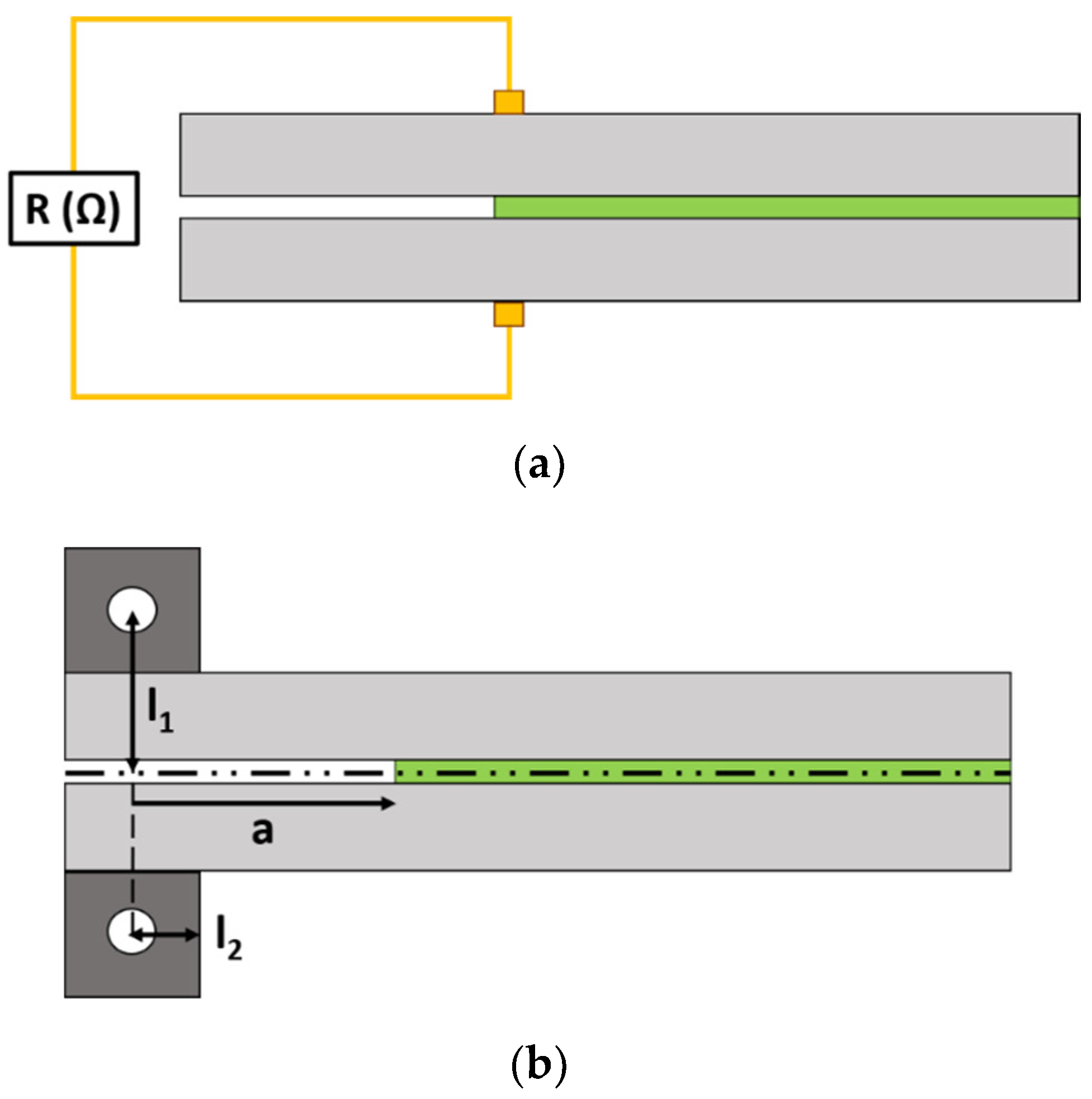
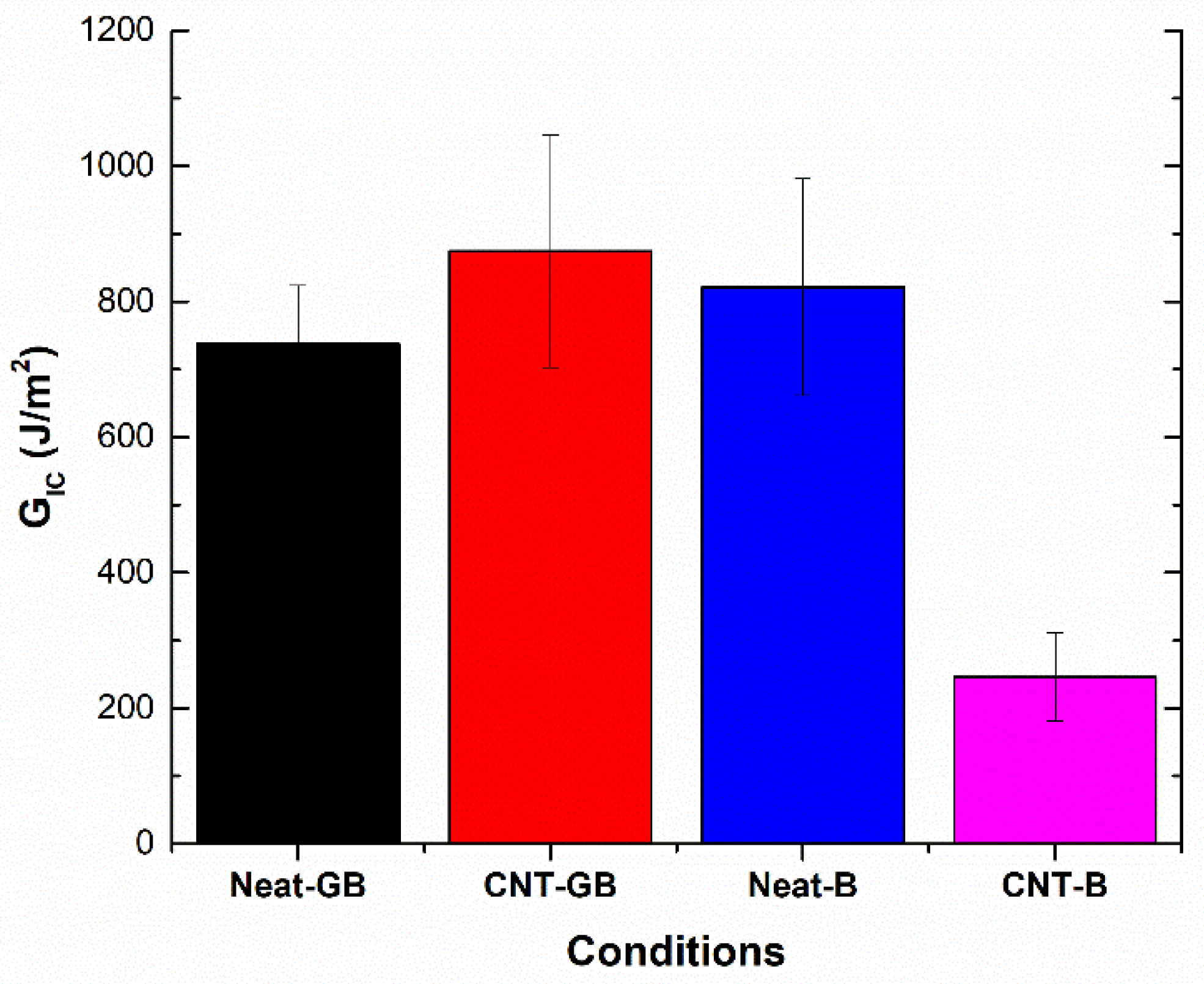


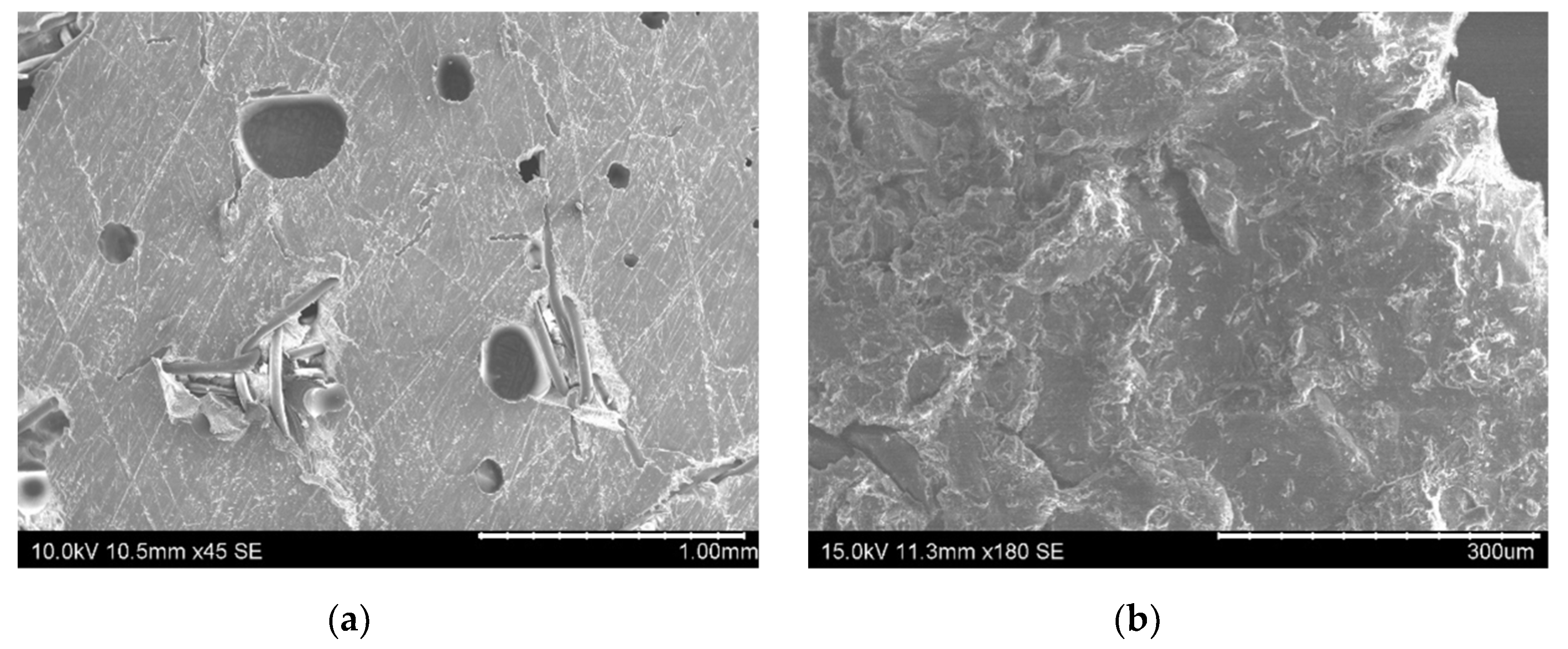
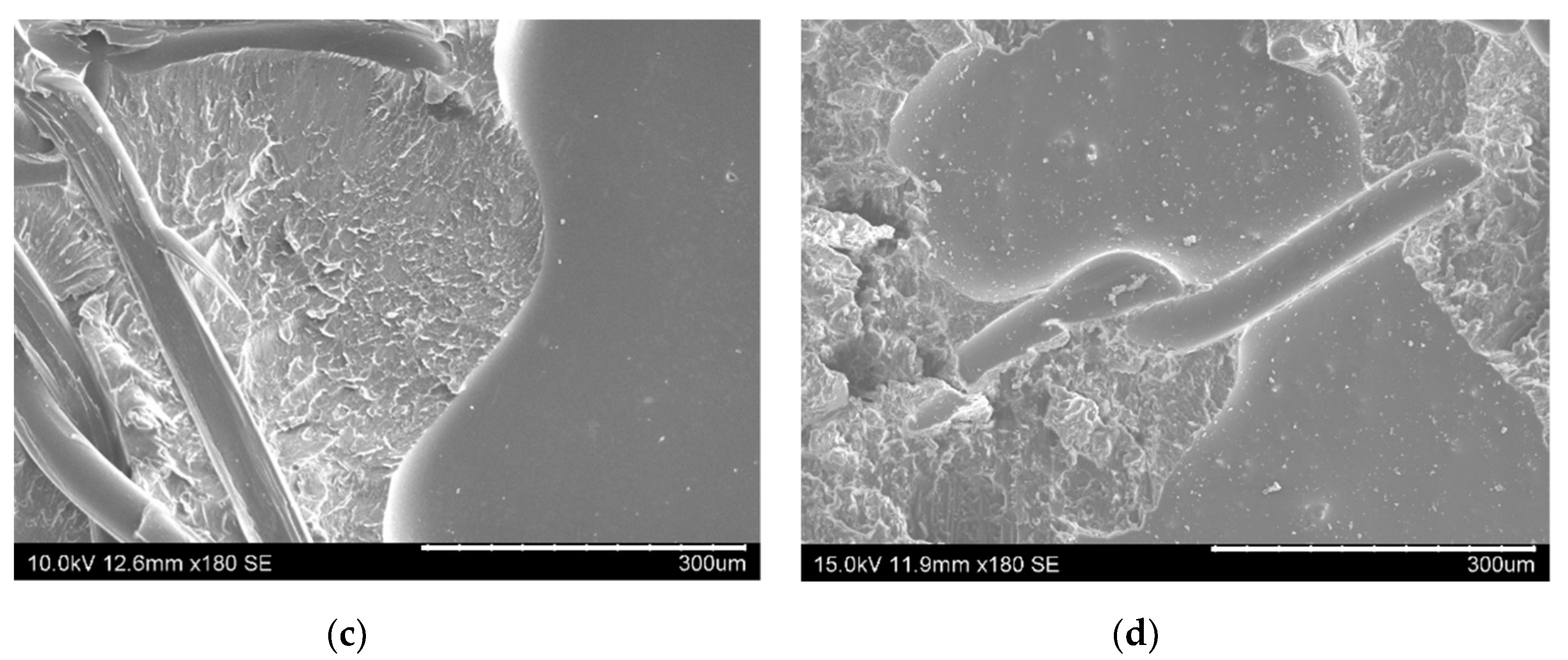
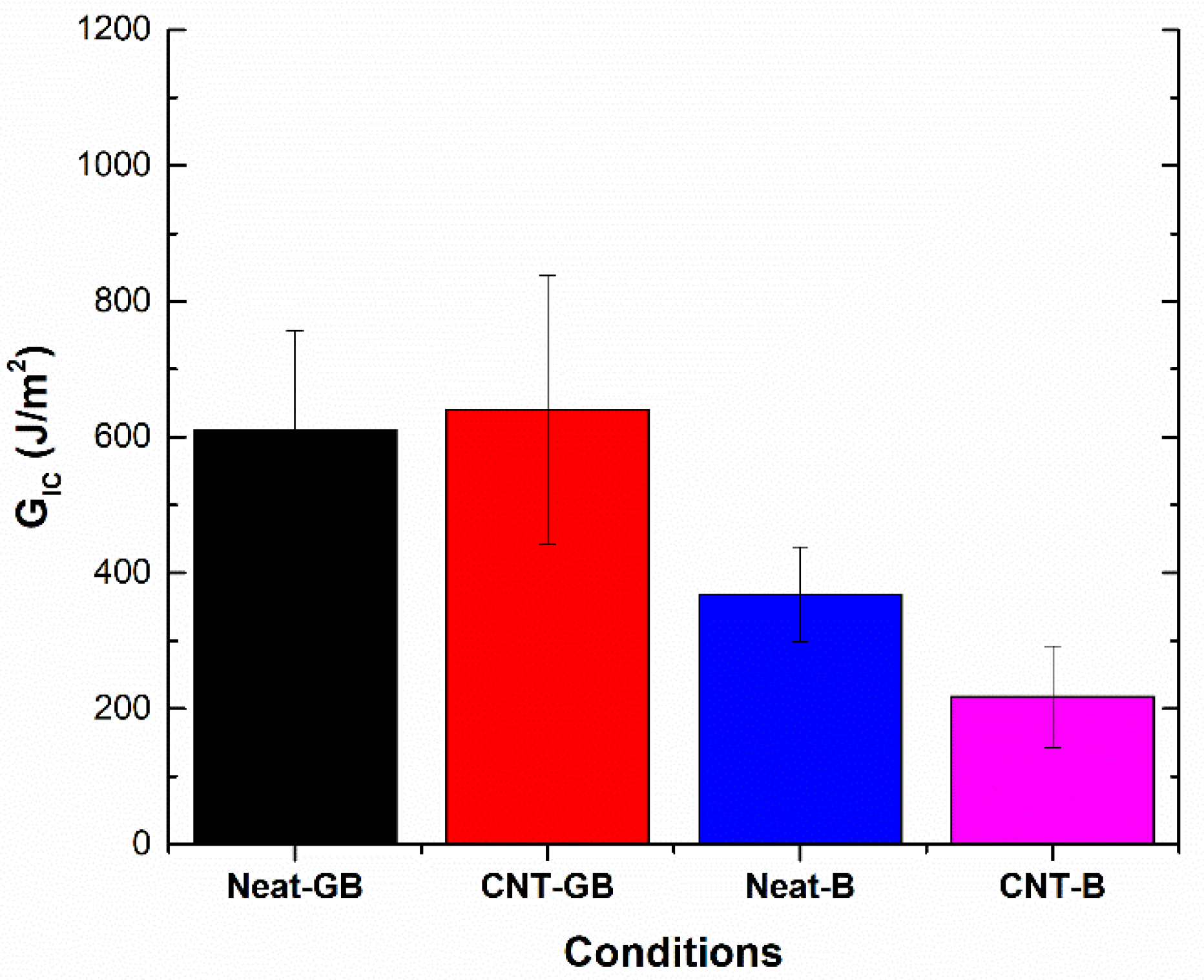

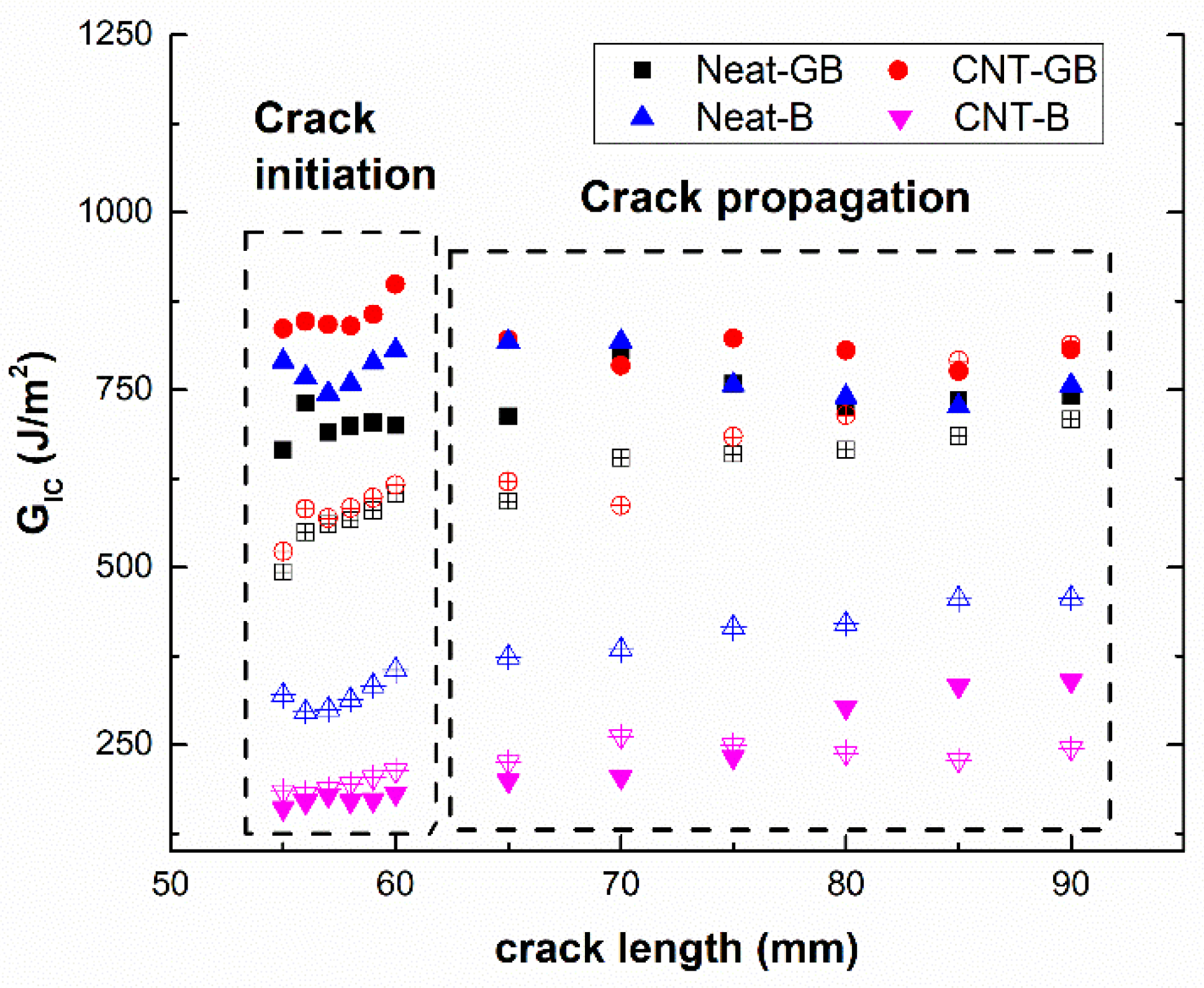
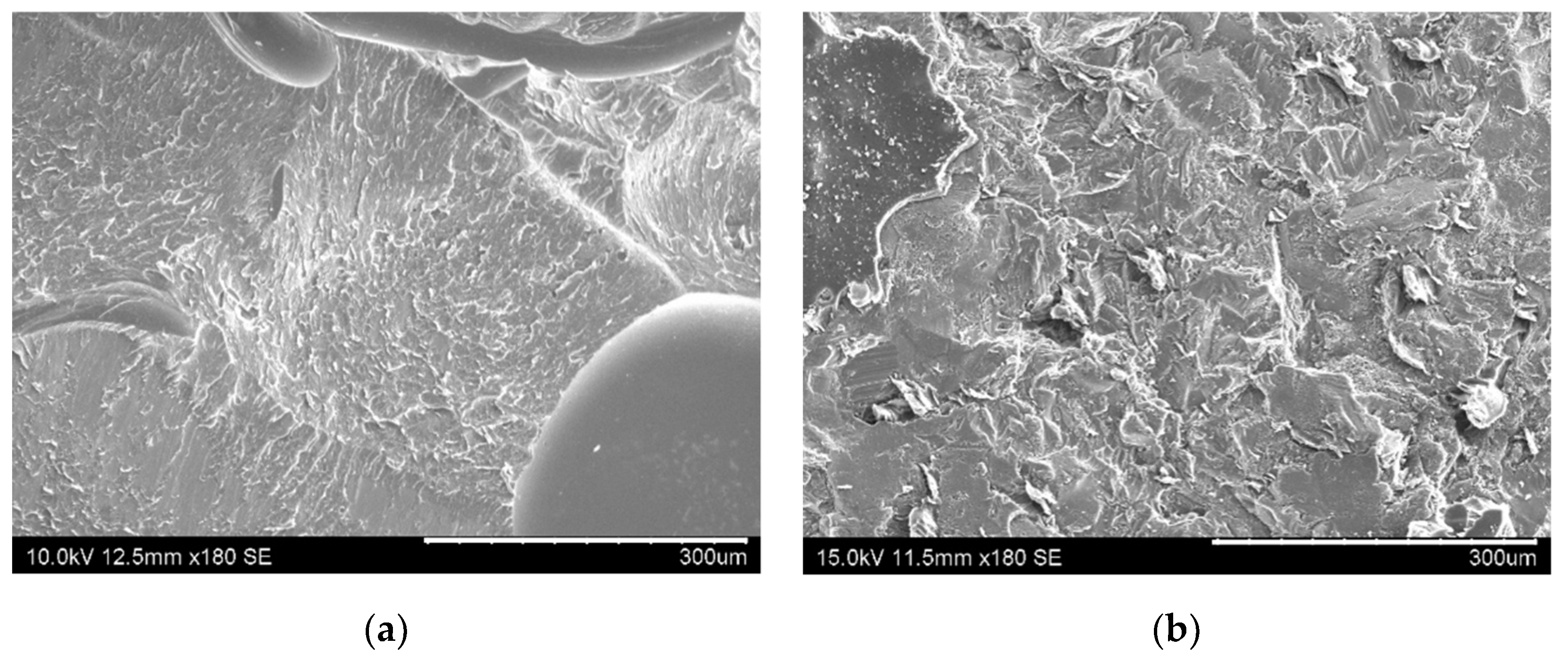
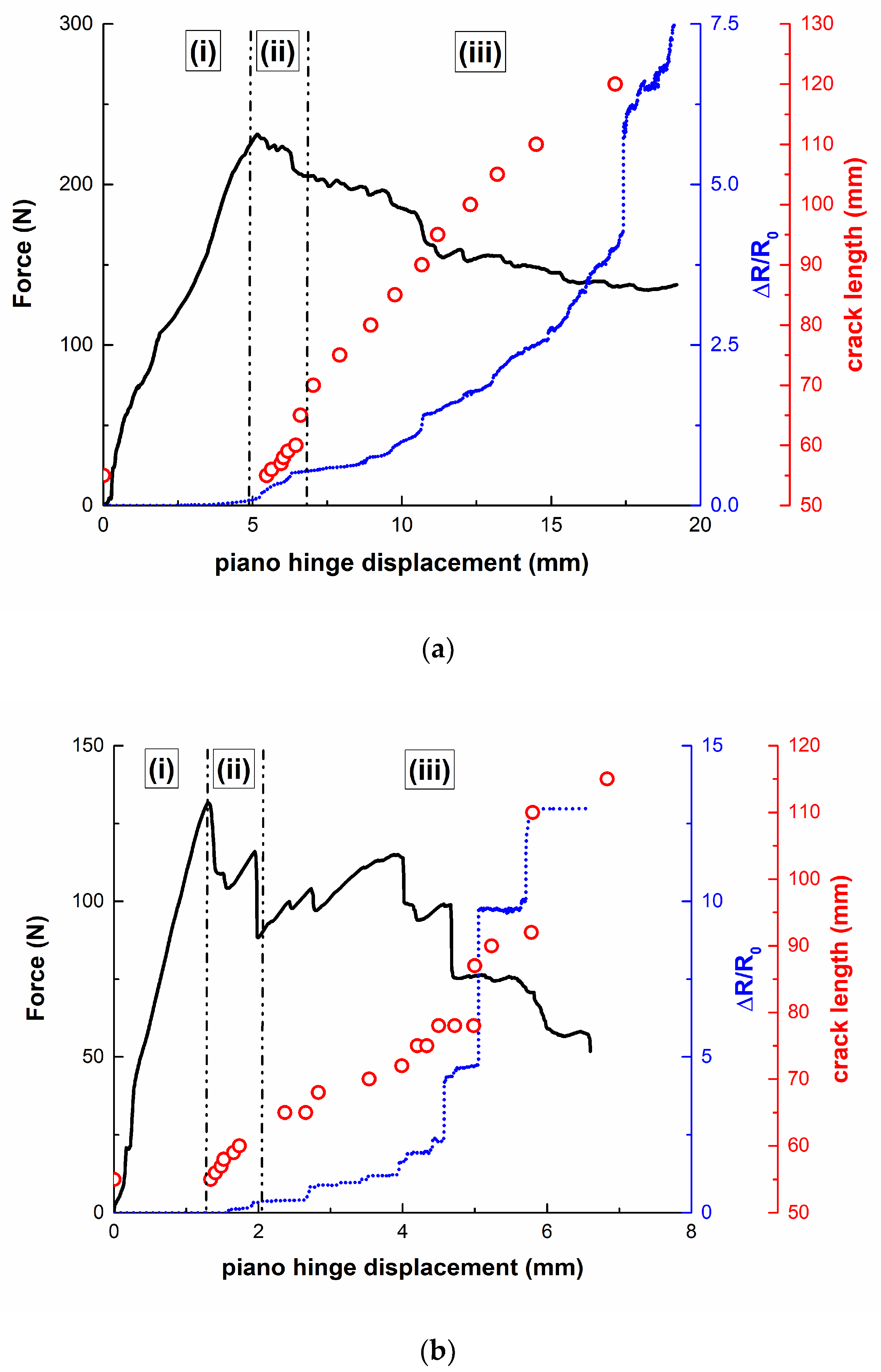
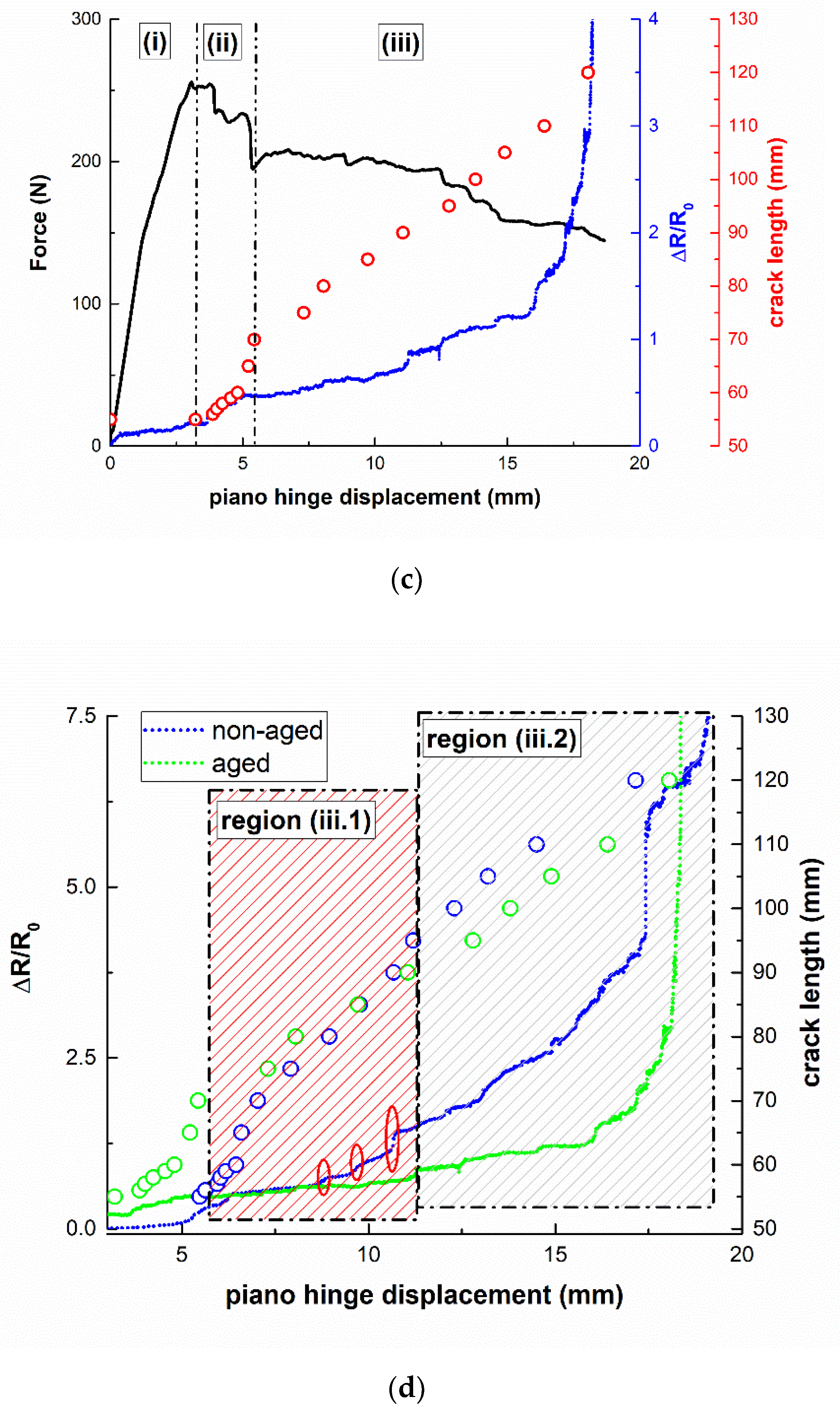
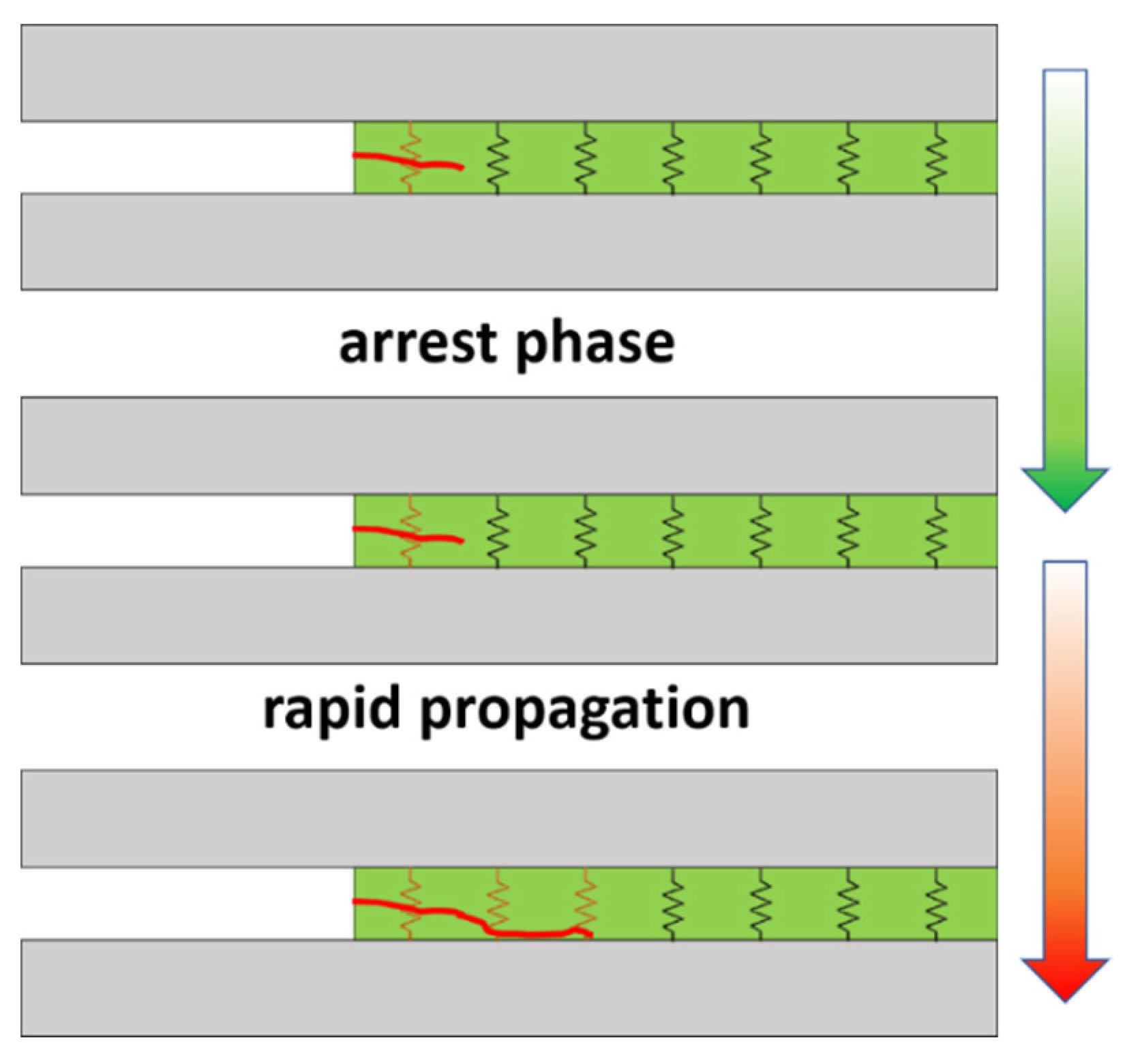
| Parameter | First Stage | Second Stage |
|---|---|---|
| Pressure | Ramp from 0 to 0.6 MPa for 15 min | 0.6 MPa for 90 min |
| Temperature | Ramp from 25 to 175 °C for 45 min | 175 °C for 60 min |
| Material | Condition | Nomenclature |
|---|---|---|
| Neat adhesive | Brushing at initial stage | Neat B non-aged |
| Grit blasting at initial stage | Neat GB non-aged | |
| Brushing after aging | Neat B aged | |
| Grit blasting after aging | Neat GB aged | |
| 0.1 wt.% CNT-reinforced adhesive | Brushing at initial stage | CNT-B non-aged |
| Grit blasting at initial stage | CNT-GB non-aged | |
| Brushing after aging | CNT-B aged | |
| Grit blasting after aging | CNT-GB aged |
| Condition | GIC (J/m2) | |
|---|---|---|
| Non-Aged | Aged | |
| Neat GB (grit-blasted) | 737 ± 86 | 610 ± 147 |
| CNT-GB | 875 ± 172 | 640 ± 198 |
| Neat B (brushed) | 821 ± 160 | 369 ± 70 |
| CNT-B | 246 ± 65 | 218 ± 75 |
| Surface Treatment | R0 (Ω) | |
|---|---|---|
| Non-Aged | Aged | |
| 0 | 214 ± 30 | 433 ± 46 |
| B (Brushed) | 329 ± 70 | 4190 ± 1477 |
Publisher’s Note: MDPI stays neutral with regard to jurisdictional claims in published maps and institutional affiliations. |
© 2020 by the authors. Licensee MDPI, Basel, Switzerland. This article is an open access article distributed under the terms and conditions of the Creative Commons Attribution (CC BY) license (http://creativecommons.org/licenses/by/4.0/).
Share and Cite
Sánchez-Romate, X.F.; Martin, J.; Sánchez, M.; Ureña, A. Mechanical and Crack-Sensing Capabilities of Mode-I Joints with Carbon-Nanotube-Reinforced Adhesive Films under Hydrothermal Aging Conditions. Nanomaterials 2020, 10, 2290. https://doi.org/10.3390/nano10112290
Sánchez-Romate XF, Martin J, Sánchez M, Ureña A. Mechanical and Crack-Sensing Capabilities of Mode-I Joints with Carbon-Nanotube-Reinforced Adhesive Films under Hydrothermal Aging Conditions. Nanomaterials. 2020; 10(11):2290. https://doi.org/10.3390/nano10112290
Chicago/Turabian StyleSánchez-Romate, Xoan F., Jesús Martin, María Sánchez, and Alejandro Ureña. 2020. "Mechanical and Crack-Sensing Capabilities of Mode-I Joints with Carbon-Nanotube-Reinforced Adhesive Films under Hydrothermal Aging Conditions" Nanomaterials 10, no. 11: 2290. https://doi.org/10.3390/nano10112290
APA StyleSánchez-Romate, X. F., Martin, J., Sánchez, M., & Ureña, A. (2020). Mechanical and Crack-Sensing Capabilities of Mode-I Joints with Carbon-Nanotube-Reinforced Adhesive Films under Hydrothermal Aging Conditions. Nanomaterials, 10(11), 2290. https://doi.org/10.3390/nano10112290






